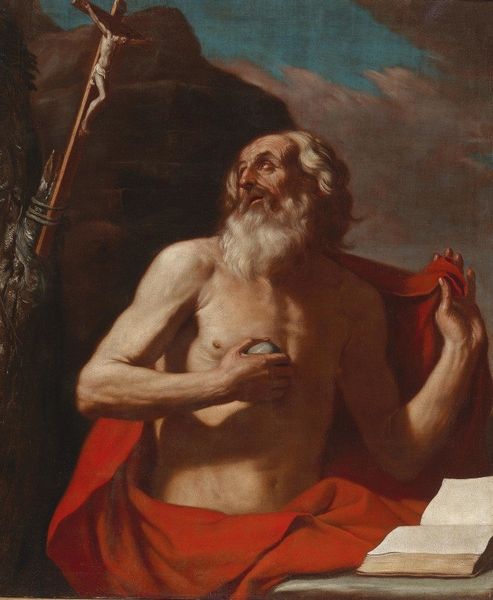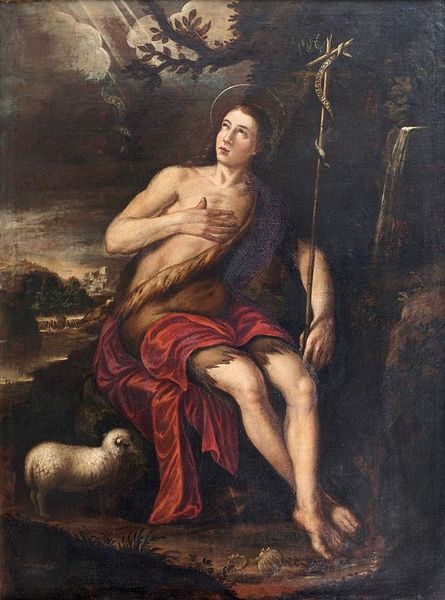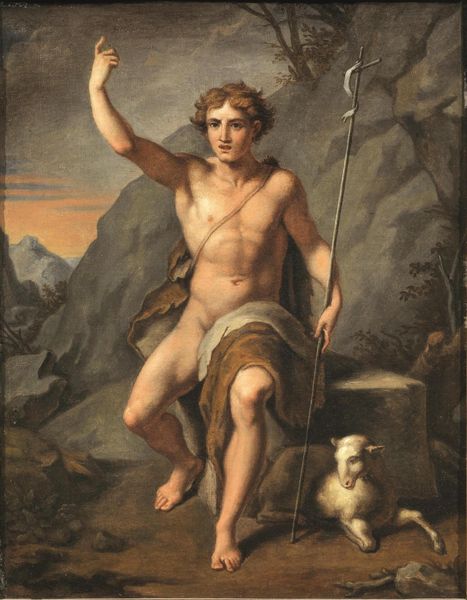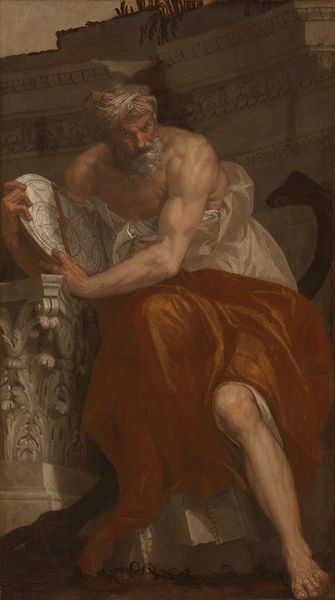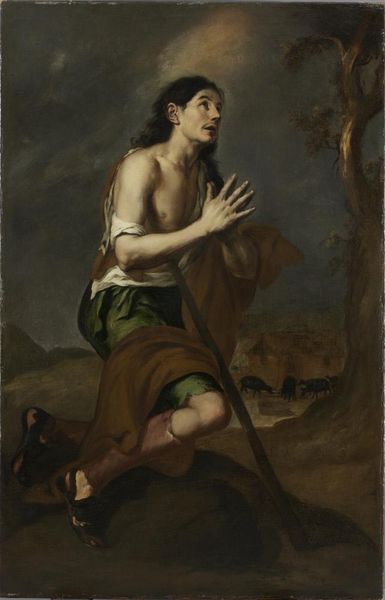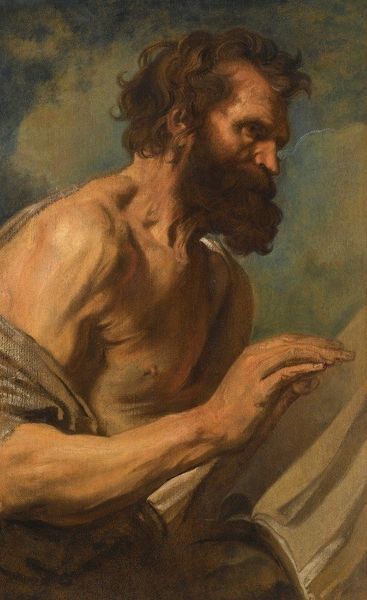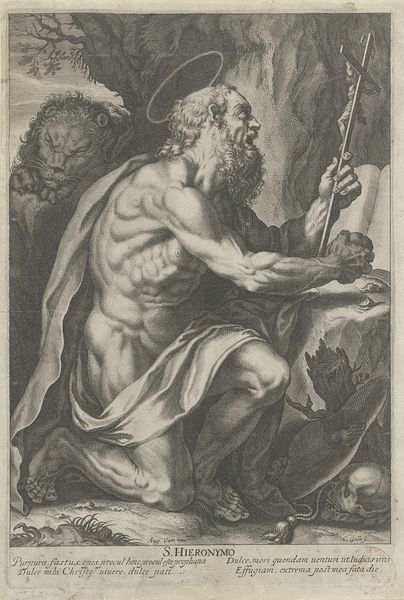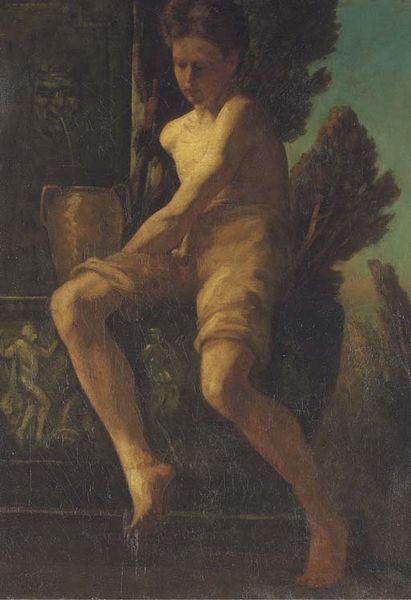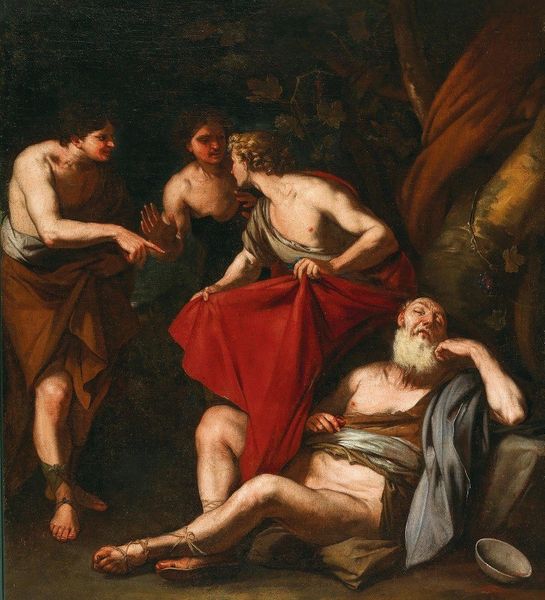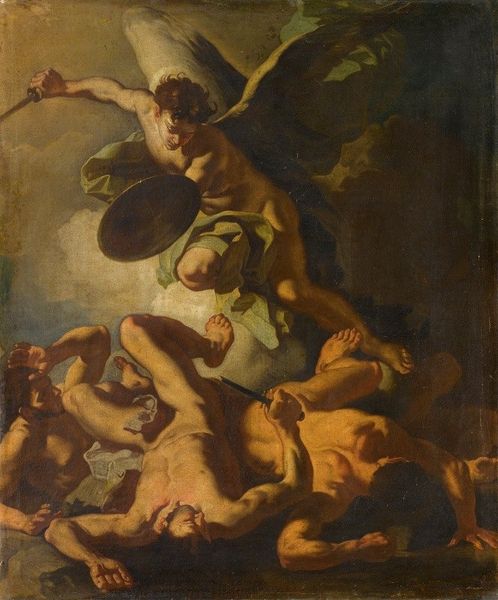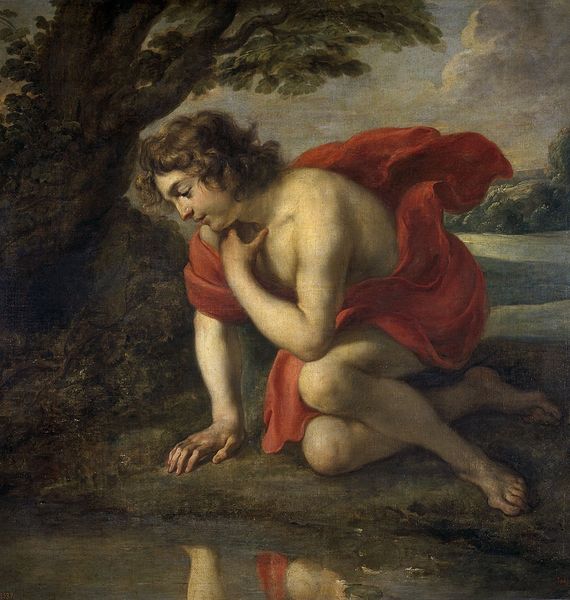
Copyright: Public Domain: Artvee
Curator: Take a look at William Merritt Chase's "St. Jerome," painted in oil around 1872-1879. What are your first thoughts? Editor: There's a real theatricality here, a spotlight effect almost, contrasted against this very deep, consuming darkness. The palette, that somber range of browns and reds, immediately plunges you into the scene. Curator: The darkness definitely feels dramatic, doesn't it? The Baroque influence is apparent with that masterful chiaroscuro. Chase is clearly using light to sculpt not just the figure but the whole narrative. Note how it highlights the skull in St. Jerome's hands and this lion lounging next to him. Editor: Oh, that lion almost disappears at first glance! St. Jerome himself is rendered beautifully: his aged face, full of contemplation, turned toward the heavens as the angel whispers… into a kind of a twisted trombone? What is up with that wind instrument! It's some kind of ouroboros-instrument. And St. Jerome, caught between mortality symbolized by the skull and divine inspiration… Curator: The angel's horn is unusual, indeed. Some interpret that detail as the trumpet of fame, immortality, an attempt to capture sound. But yes, you nailed the tension there, that constant dialogue between earthly and divine. The red robe wrapped around Jerome looks to me like an attempt to give flesh a certain status it may or may not have on its own. What could red stand for? Editor: I think red signifies sacrifice and passion, the intensity of Jerome's faith. The fact that he's semi-nude with this robe seems intended to place him both in worldly and otherworldly spheres. Plus, artists, historically, have used this specific hue to demonstrate that the figures that wear it possess knowledge and wisdom... Curator: Interesting insight, that idea of clothing oneself in wisdom... To look at this, you could imagine St. Jerome as the patron saint of overthinkers and pedants—an odd occupation that suits artists, critics, and theologians, those types given to much thought. It is like this old man is saying 'Please do not disturb the artist during illumination'. Editor: A fantastic characterization that breathes fresh life into St. Jerome! Considering his legacy, he might just welcome such an epithet. It encourages you to wonder, too: just how should one look like to be regarded a man of God and of art?
Comments
No comments
Be the first to comment and join the conversation on the ultimate creative platform.
